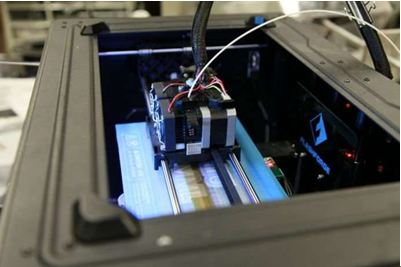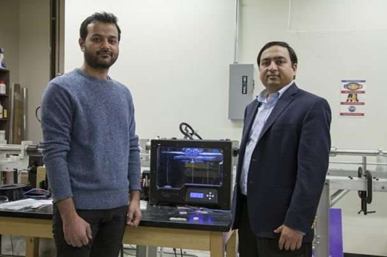A team of materials engineers at the New York University School of Engineering developed composite foam fibers and acquired a 3D printing process using commercially available printers. Image source: New York University School of Engineering A team of materials scientists from the New York University School of Engineering has developed the first process for 3D printed composite foam that can be used in automotive, aircraft and marine manufacturing where small density but high strength is required. Their breakthrough has enabled manufacturers to print components that have any complex shape and can withstand stress deeper, so they have particular application prospects for submarines. Composite foam is an epoxy or plastic resin composite that blends billions of tiny insulating glass or ceramic balls. This composite has excellent buoyancy and strength and is widely used by James Cameron. Submarines such as the Deepsea Challenger and the next generation of Alvin deep-sea explorers. In two papers published by JOM, Nikhil Gupta, associate professor of the School of Mechanical and Aerospace Engineering, and his student researchers at the Department of Mechanical and Structural Mechanics and Mechanics at the School of Mechanical Engineering at New York University, and collaborators in India reported that they have developed Composite foam fibers are produced and 3D printed on commercial printers. At present, composite foam parts are produced by injection molding, and adhesives and fasteners must be used to connect the parts, which makes the parts vulnerable. 3D printing, also known as additive manufacturing, allows manufacturers to integrate complex parts such as the car body and internal structure to make it more tough. A team led by Gupta's Ph.D. student Ashish Kumar Singh describes how they can overcome obstacles in additive manufacturing, such as the smashing of microspheres during mixing and the tendency of microspheres to clog printer nozzles. They also demonstrated the environmentally friendly recyclability of composite foam fibers. Researchers have developed high-density polyethylene plastic (HDPE) fibers commonly used in the manufacture of industrial-grade components, as well as microspheres made from recycled fly ash (fly ash - waste by-products from coal combustion - in synthetic foam) Toxic substances can also be removed from landfills. Gupta, who works with colleagues at the National Institute of Technology (NIT-K) in Suratkal Karnataka, India, said: "Our focus is on developing a fiber that uses commercial printers for printing without changing the printer hardware. Parameters that affect the printing process. A lot, including plate material, temperature and printing speed. Finding the best process parameters is the key to achieving high quality printing." Ashish Kumar Singh (left), Ph.D. student of Nikhil Gupta (right), associate professor of mechanical and aerospace engineering, reports on the research progress of composite foam filaments and related processes for 3D printing using commercial printers. Image source: New York University School of Engineering  Gupta recently collaborated with industry partners to create an online design tool for composite foams. He explained that the hollow spherical particles used in the study ranged in diameter from 0.04 mm to 0.07 mm. This combination of size and shape allows the microspheres to flow through the 1.7 mm 3-D printer nozzle without blocking material flow. He explained that this process required the team to minimize the degree of particle breakage during the mixing of HDPE resin with the fragile hollow particles, resulting in low density fibers. Singh added: "We want to add as much hollow particles as possible to make the material lighter, but an increase in the number of particles means that more particles will break during processing. Unbroken hollow particles are made in filaments. A large amount of process control is required during the process, or after the 3-D printing process. In addition to the convenience of the new process in the manufacture of complex components, the materials produced by 3-D printing alone have comparable tensile strength and density to those produced by injection molding. “The results show that the composite foam components produced by 3D printing are comparable in performance to the same materials produced by the most common conventional injection molding,†Singh said. Gupta said that including Brooks Saltonstall, an undergraduate researcher at New York University's School of Engineering, Balu Patil and Mrityunjay Doddamani from NIT-K, and visiting student Niklas Hoffmann from Clausthal University of Technology in Germany. This group will now focus on optimizing material properties for a variety of applications, such as underwater vehicles that can operate at specific depths. The JOM publication contains: "Composite foam additive manufacturing Part 1: Fiber development, performance and recycling potential; Composite foam additive manufacturing Part 2: Sample printing and mechanical properties." A Face Shield, an item of personal protective equipment (PPE),
aims to protect the wearer's entire face (or part of it) from hazards such as flying objects and road debris, chemical splashes (in laboratories or in industry), or
potentially infectious materials (in medical and
laboratory environments). Face Shield,Protective Face Shield,Kids Face Shield,Adjustable Face Shield Dongguan Yibao Technology Co., Ltd. , https://www.yibaomedical.com

/*kangxianyue 250*250 was created on 2017/3/29*/ var cpro_id = "u2939694";